Feature
A College Try at CALS
Made possible by federal funding, a new college program immerses rural Wisconsin high school students in the campus experience and opens their eyes to new possibilities.
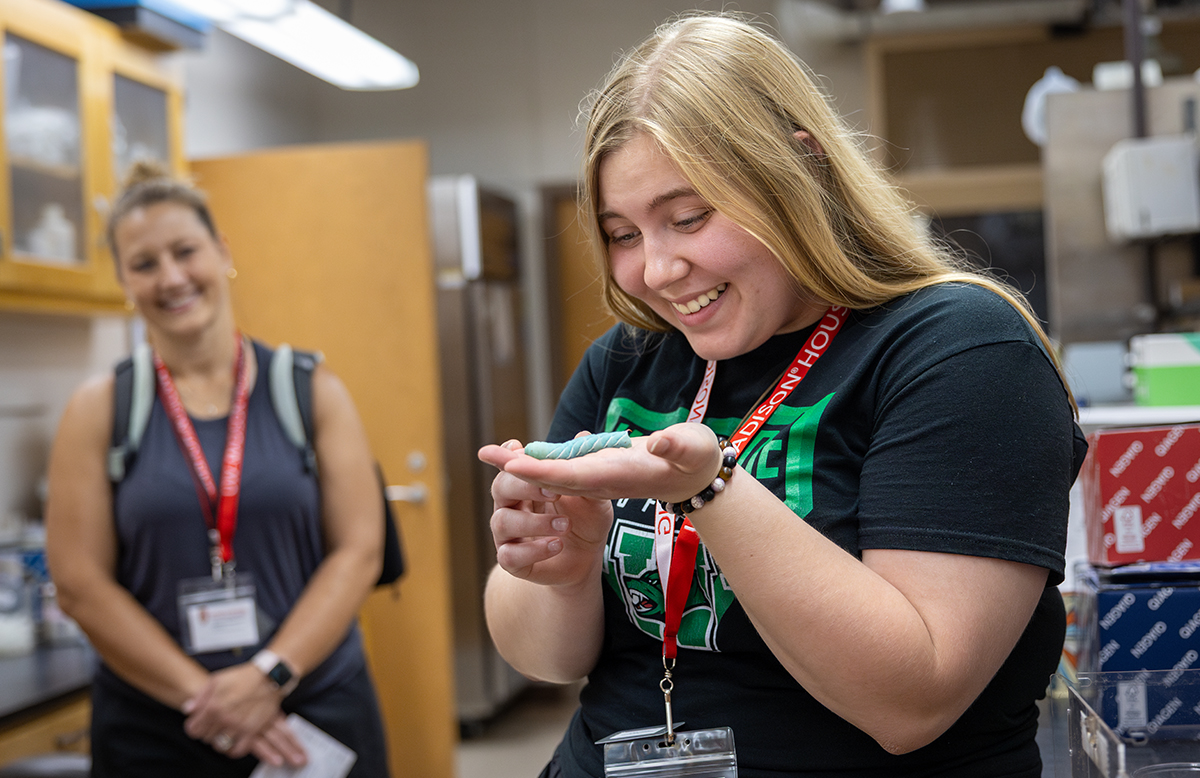
The UW campus tends to be quiet in the middle of June. Commencement has been celebrated, dorms have emptied. Although classes continue during the summer term, some students take online courses from home, and others complete off-campus internships. But this past June, things were a little different. The CALS end of campus was abuzz with the excited faces and voices of participants in the inaugural Wisconsin Rural Scholars Program.
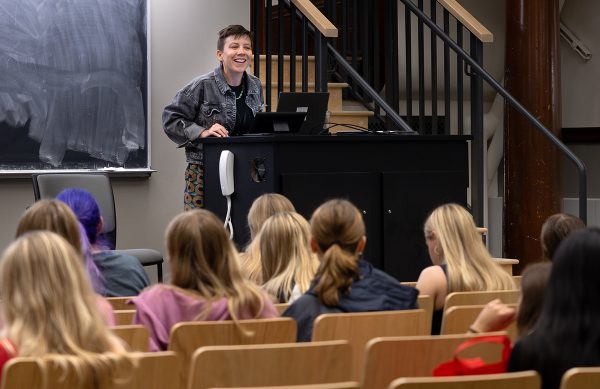
The new CALS program welcomed 26 rural high school juniors and seniors and seven of their teachers. From June 19–26, they stayed in the dorms, ate in the dining halls, visited labs, and attended lectures. It gives students a look at college life at CALS and helps them think about what higher education could mean for them. For many participants, this was one of their first forays into a university.
“I didn’t think about college until last year, and I didn’t know CALS was a part of Madison, that there was an entire place dedicated to agriculture,” says Ted Furan, a student from Necedah High School. “My original idea after high school was culinary arts, and I didn’t know about food science as a topic. Here, I figured out I can change food, change the way it tastes and looks in so many different ways. I think culinary arts is just going to be a hobby, but I can actually change the way people enjoy food.”
That process of discovery is one of the main purposes of the rural scholars program. Its director, Tanya Cutsforth BS’08, MS’10, wants to highlight CALS academic programs and research as well as the complete undergraduate student experience — what students can expect upon graduating high school and attending a college or university. It provides valuable insight into college life and CALS specifically.
The program also helps make Madison and the university seem smaller. The idea of a big city and campus with thousands of students can be intimidating for some rural students. Through rural scholars activities, students connect with peers and other friendly faces so they can feel more comfortable at UW–Madison and find a sense of belonging at CALS.
“For many rural districts, college resources and experiences are limited by cost and distance from a large campus like UW–Madison,” Cutsforth says. “We want the program to connect students and their teachers with everything CALS has to offer. We want them to see themselves here on campus and experience what college life could be like for them. And we want to provide this free of charge.”
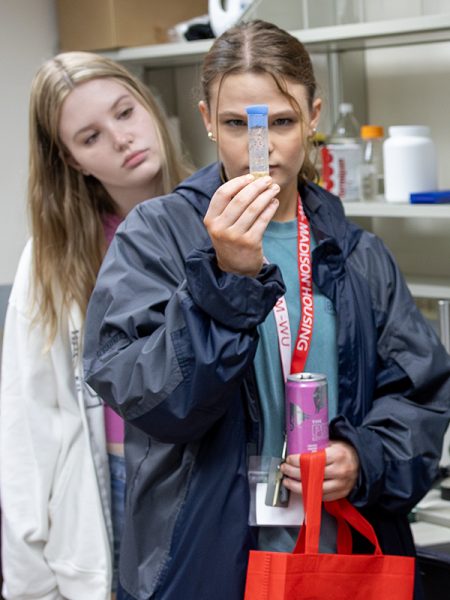
Students pay nothing to attend the rural scholars program, and teachers receive a stipend for their participation. It’s supported by the Wisconsin Rural Partnerships Institute (WRPI), which is part of the Institute for Rural Partnerships, funded by the U.S. Department of Agriculture’s National Institute of Food and Agriculture. WRPI aims to provide opportunities for rural communities throughout Wisconsin.
“It’s so exciting to see the launch of the Wisconsin Rural Scholars Program,” says CALS Dean Glenda Gillaspy. “During my first year as dean, I heard from many CALS alumni and stakeholders that students from rural Wisconsin were not inclined to think of UW–Madison when it came to choosing a college because they felt they wouldn’t fit in here. This program gives students and their teachers a chance to visit their land-grant university and see all that CALS has to offer to students.”
This summer’s multi-day agenda included welcome events, talks focused on financial aid and applications, visits to labs, and time for socializing and campus exploration. During lab visits, professors and grad students introduced research concepts, such as growing plants in space and using fruit flies as models to learn about genetics. Faculty and staff also provided hands-on experiences. For example, in the biological systems engineering shop, anyone willing could drive a quarter-scale tractor and maneuver a track chair made to improve accessibility for farmers.
“These students are so attentive and interested,” says genetics professor Patrick Masson, whose lab was a stop on the tour. “They are asking some really great questions, and many of them seem interested in the idea of bench work and research. It would be exciting to have them here.”
In addition to the visits and talks, students were asked to work on a “college road map” throughout the program. These road maps helped students think about their backgrounds, their interests, and where they could see themselves going in the future. For some, the thought experiment opened new areas of possibility.
“I knew I was interested in biology, and I came in knowing about environmental science and ecology, but something I might explore is entomology, the study of bugs,” says Charley Mingus, a student from Waterford. “I love animals, and when we were visiting entomology, there was a tarantula and a hornworm. When we got to the bug museum, I thought that was so cool.”
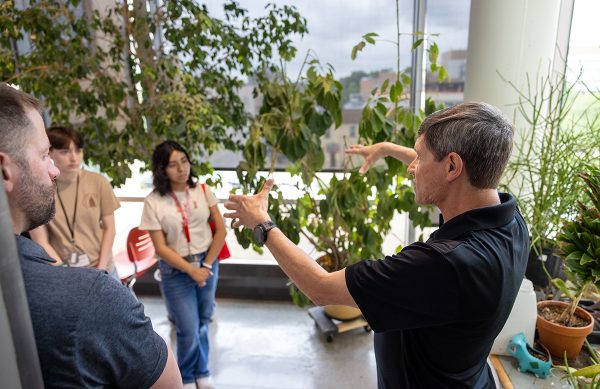
Teachers participating in the program were provided with resources to take back to their schools as they sat in on student activities and attended sessions personalized for them. In one such meeting, Jane Duffstein, assistant dean for student recruitment and outreach, focused on what CALS can offer and how to help interested students make connections here or at other universities.
Of course, the teachers also got to experience the excitement of front row seats as students discovered possibilities and made realizations about their goals. Waterford teacher Craig Kohn BS’08 notes that the road map, which allows students to plot a course from high school to college, was especially valuable. He was happy to hear students talk about their aspirations and plans as they presented their road maps on the final day.
“This program is an opportunity to provide a path forward in a hands-on way that’s meaningful to our students and in a way that helps them see a place for themselves well after high school,” Kohn says. “Our students heard current undergraduates talk about their backgrounds and high schools. They saw the overlap between the people thriving here and their own histories and interests. I think that was one of the more important parts of this. They saw that UW–Madison is a place made up of people with the same backgrounds and experiences as they have, as well as so many others.”
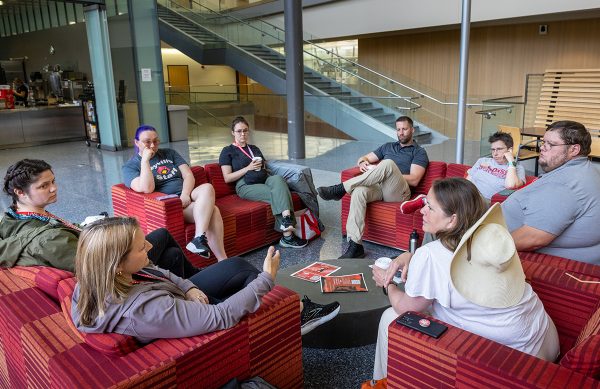
A key driver for the program: Help rural students see a place for themselves at UW and in CALS. Its first-hand, on-campus experiences can make all the difference for high schoolers who may be unsure if college is for them.
“One of my students didn’t know anything about microbiology, and she found this entire new field she’s really excited about. She wants to go home and research it,” says BreEnna Gates, a teacher at Mayville High school. “Another student came here just because he thought it would be fun. Now he’s super interested in college and is saying he has to do everything possible to get into this place. I’m so excited to see that in my students. That’s why I brought them.”
Both the students and teachers note the value of seeing high school classroom concepts come to life in the labs. Kohn finds it inspiring, for himself and his students, to see the Wisconsin Idea in action as researchers work to solve real-world problems.
“Seeing the research on this campus — going into labs, going into gardens, going into the fields — was vital,” Kohn says. “There are people on this campus every day addressing problems to make the lives of people in Wisconsin better, and that’s one of the most valuable things to see.”
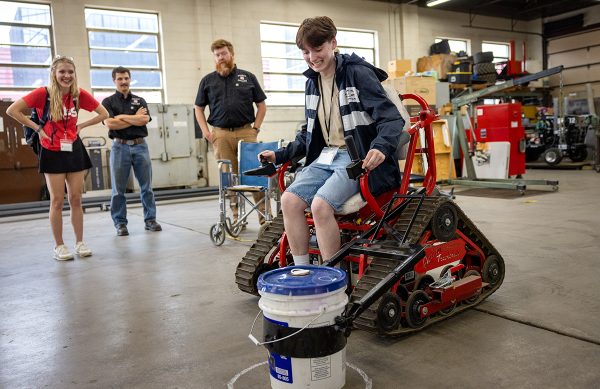
“Checking out the labs was one of my highlights,” adds Mingus, the student from Waterford. “I liked when we got to look through microscopes and see stuff that I learned in AP bio being applied in actual labs. I think that was important to me because it validated my learning and my experience with science.”
While this was the program’s first year, all those involved in the inaugural run hope it will continue for many years. Excitement and appreciation for the program is obvious: Many students say they can’t wait to tell their friends about the experience.
“I would 100% recommend this program,” says Furan, the student from Necedah. “It is a great way to experience college without having to pay and without going in blind. Staying in a dorm, talking to random people, meeting strangers — it’s so nice experiencing college to see if it’s truly what you would want.”
The four-day visit to campus gave many of these rural students a close look at a college, a university, and a city, a combination of explorations they would not have gotten on their own. Cutsforth plans to use this summer’s experience and feedback from participants to develop the program further and offer it as long as possible.
“We want more and more participants to see the possibilities that exist here,” Cutsforth says. “We want rural students finding a home here, or in other colleges of their choice, going forward. This is just the beginning. We already have students and teachers asking if their school can come back next year.”
Gates, the teacher from Mayville, also sees unparalleled value in the program. “This program would be great for so many teachers because the kids are expanding their knowledge and seeing opportunities that are going to broaden their horizons,” she says. “Kids need to see these things. They can’t learn this in a classroom. They have to literally be here and see it to really understand. Without my kids being here, they wouldn’t have found what they needed.”
This article was posted in Fall 2025, Features and tagged Wisconsin Rural Partnerships Institute, Wisconsin Rural Scholars Program.
